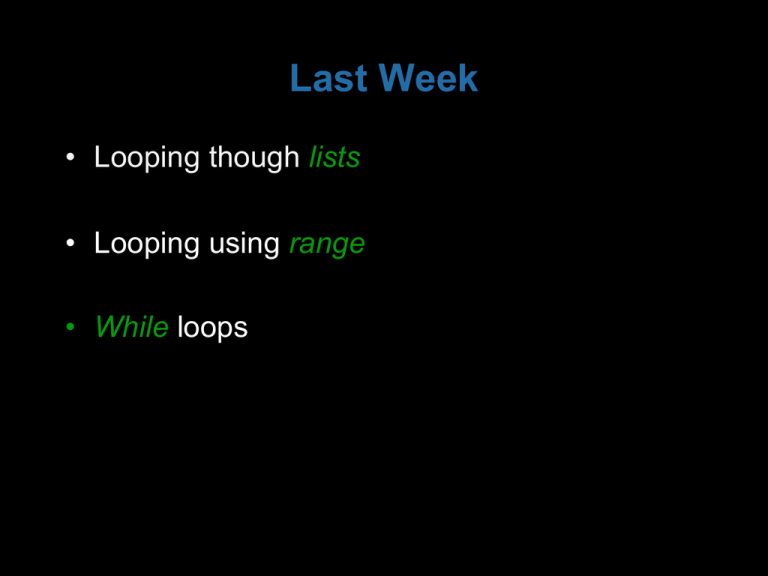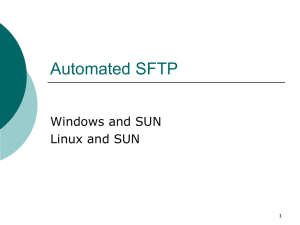Power Point
advertisement

Last Week • Looping though lists • Looping using range • While loops This Week • Special characters in strings • Files – what are they? • Opening and closing files • Reading and writing to files • Comma Separated Files Invisible Characters How do we indicate a tab, newline or ‘ or “ inside a string? \t \n \’ tab new line single quote \” double quote \\ backslash These are called escape sequences. print(“This string has a \n newline and a \t tab.” This string has a newline and a tab. Files • Files – what are they? – Can think of as a collection of stored information – Computer thinks as a sequence of bits possible arranged in characters • Files have names: – my_python.py, homework.txt, etc. • What can we do with a file? – Read from a file and write to a file Opening Files How do we open a file in Python? import io myfile = open(‘story.txt’, ‘r’) •Open is the Python function •Story.txt is the name of the file to be opened •myfile is a variable that is assigned the file object (also called stream or reader). •‘r’ is a string indicating that we will do with the file (read, write, append) Using Files After we are finished with a file we must close it: myfile.close() When we write to a file, we have two choices: Write: myfile = open(‘filename’, ‘w’) Append: myfile = open(‘filename’, ‘a’) •write replaces the file filename •append appends to the file filename Reading Files There are many ways to read from a file. 1.Using a for loop: myfile = open(‘filename’, ‘r’) for line in myfile: <do something with the line> 2.Read the whole file at once into a list of strings: myfile = open(‘filename’, ‘r’) list_of_lines = myfile.readlines() Reading Files 3.Read the entire file into a string: myfile = open(‘filename’, ‘r’) s = myfile.read() 4.Read a specific number of characters: myfile = open(‘filename’, ‘r’) s = myfile.read(10) reads 10 characters s = myfile.read(10) reads then next 10 characters Reading Files 5.Read one line at a time: myfile = open(‘filename’, ‘r’) line = myfile.readline() reads a line line = myfile.readline() reads the next line End Of File (EOF) How do we know when we reach the end of the file? This method automatically recognizes EOF. for line in myfile: <do something with the line> Here we have to check for the end of file: line = myfile.readline() reads the next line and s = myfile.read(10) reads 10 characters The EOF character is the empty string “”. Writing to a file First open the file for writing or appending: myfile = open(‘story.txt’, ‘w’) start the story myfile = open(‘story.txt’, ‘a’) continue the story Then write to the file: myfile.write(‘Once upon a time…’) myfile.write(‘The end.’) Then close the file: myfile.close() Reading from a CSV file Often we have comma-separated values data files: First Name, Last Name, Utorid Anna, Bretscher, bretsche Joe, Johnson, johnsonj Sally, Jordan, jordansa Why do we like CSV files? – Spreadsheet applications like excel understand it – Many other programming languages also understand them – Easy to generate ourselves Reading from a CSV file How do we read comma-separated values data files: import io import csv csv_file = open(‘csv_filename.csv’, ‘r’) reader = csv.reader(csv_file) … for line in reader: # read like an ordinary file # but line is a list









